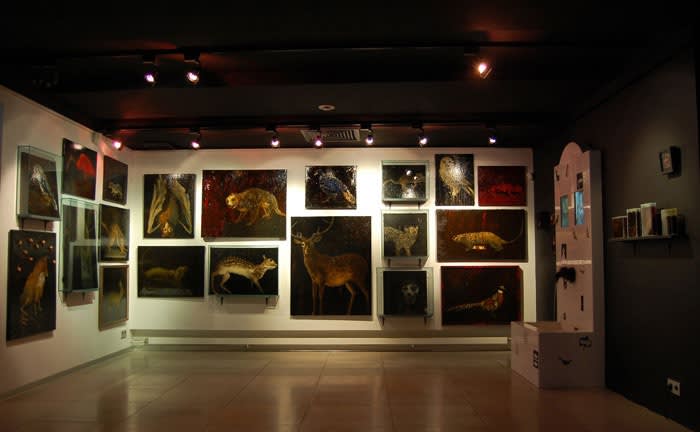The large painting by Petr Shvetsov "Night Watch", which opens the exhibition is not are make, nor a replica, nor a parody of Rembrandt or the movie of the same name. It is based on the story of another famous work of the Dutchschool of painting — the punishment of the hunter. An inquisitive student of icons can find other themes here: the uprising of animals and the natural kingdom against the total power of man over the world (the second part of the "The Crocodile" by Corneille Chukovsky) and animated exhibits from "A Night at the Museum"or the wild beasts of the jungle, which suddenly appeared from another, hostile world in the game "Jumanji." However, something is taken from Rembrandt paintings here too, and if you look closely you can see a great deal. Twenty three guards and dogs patrol and twenty-three animals gather in the meadow after the act of vengeance: the hunter is hanged (hello Necrorealists) — this is not a joke. The space of the picture is constructed in such a way that involves the viewer in what is happening, making you an unwitting accomplice of the dark sinister action. The painting jumps from life-giving blood flows to the dead carcasses of animals like an alchemical operation that turns the dead into the living and vice versa.
"Night Watch" is displayed very inconveniently for the viewer: the canvases hang at angles, the canvas breaks out of the framework of the space allocated to it like the futuristic truck in the living room, an invasion which violates decorum and etiquette. The painterly portrayal of the animals, insects and birds is very expressive and conveyed by the artist with passion. It captures you as soon as you enter into the space of this taxidermicsurrealism.
Gleb Ershov, exhibition curator
